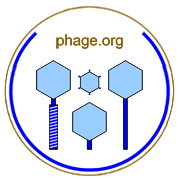

Application of phages to an immature bacterial lawn by dropping a small volume such as 10 µl onto the surface of a plate.
Spotting can be used to provide a first approximation of the ability of a phage to lyse (or just kill) a bacterial strain such as during phage typing procedures or, at lower phage densities, as a means of phage titering that is less materials intensive than full-plate assays.
Spotting should not be confused with plaquing, even though spotting can be a means of generating plaques. In particular, a spot in which clearing is confluent (effectively no bacteria across the area of the spot) is not a plaque, and this is because while a plaque starts with one or only a few phages and is formed via repeated rounds of phage infection and bacterial lysis, a spot that starts with numerous phages (as is often the case) produces confluent clearing solely through inhibition of bacterial replication.
For more on this topic, see Wikipedia, Google (Alt), and PubMed (Alt). Contact web master. Return to terms.











